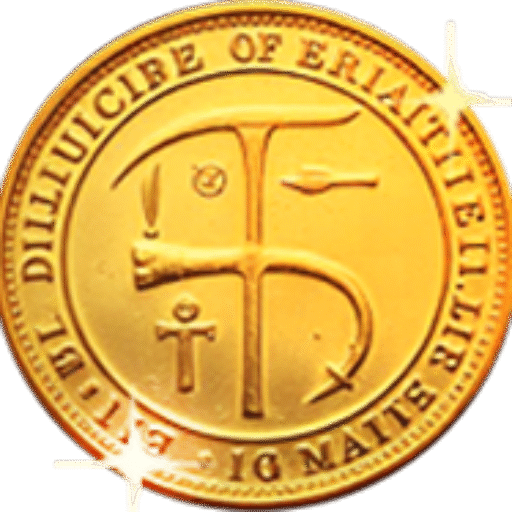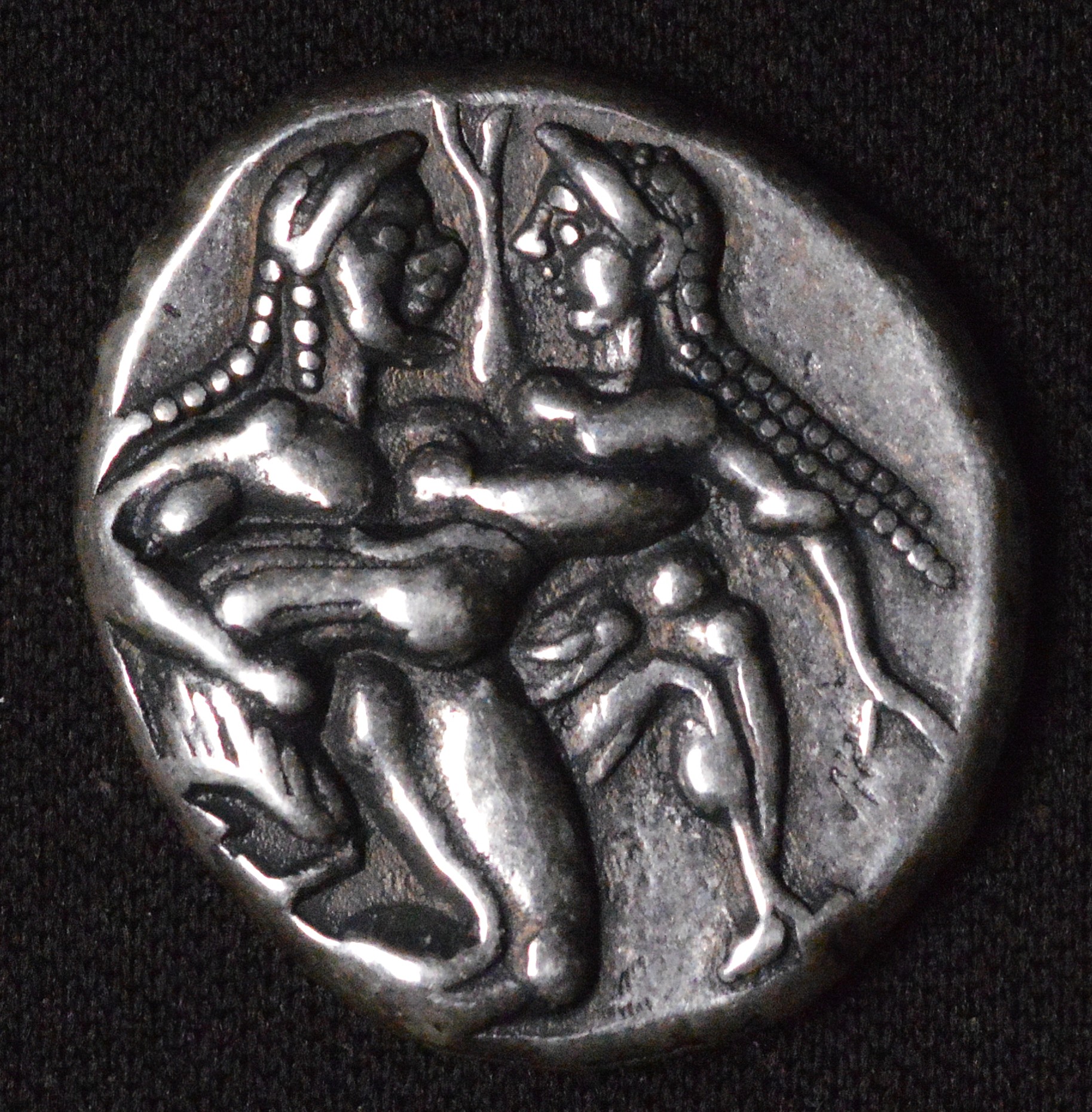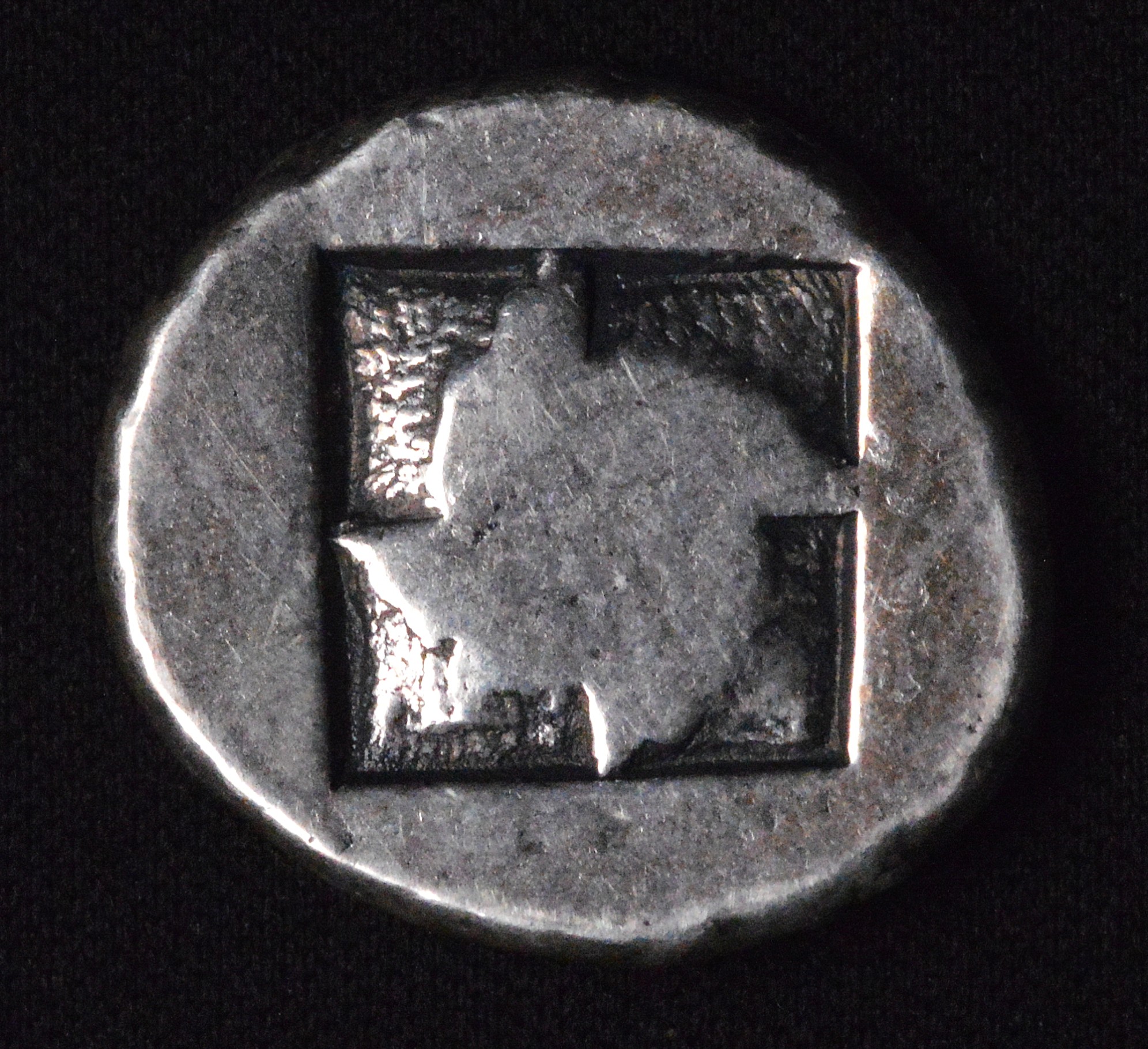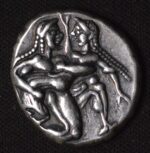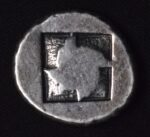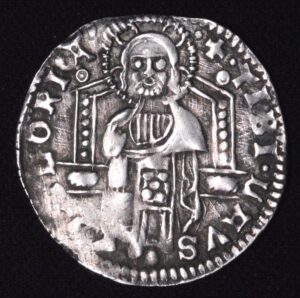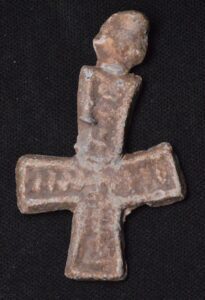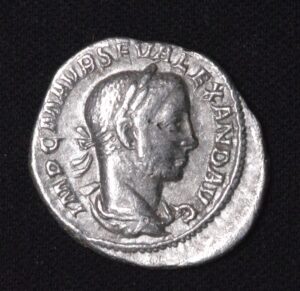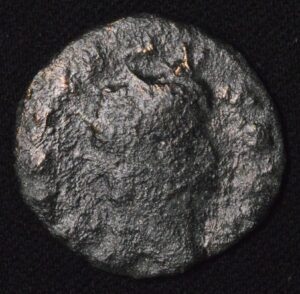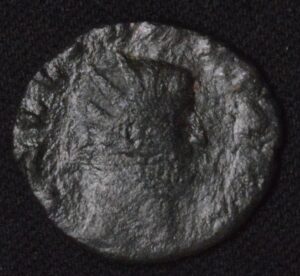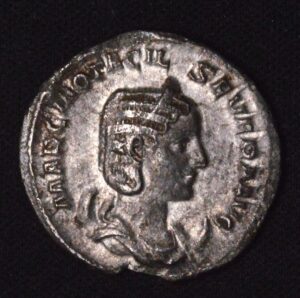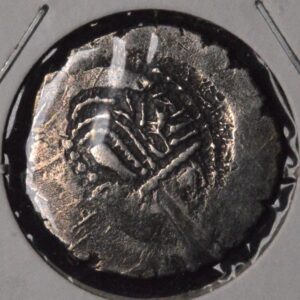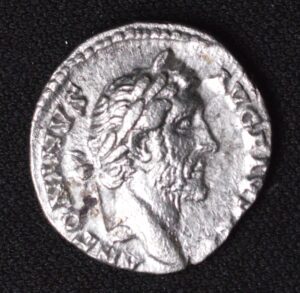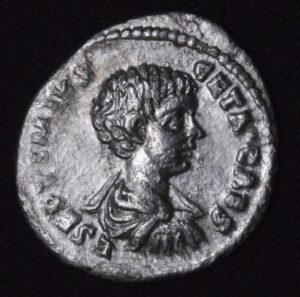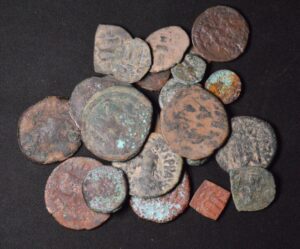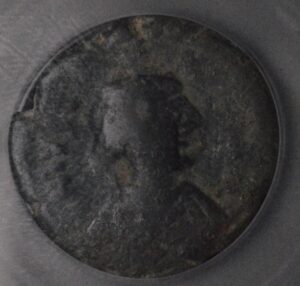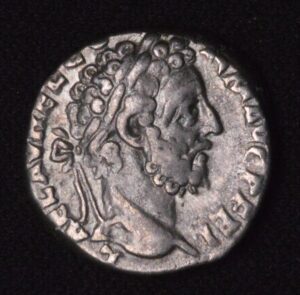Description
The Thasos silver stater, depicting a naked satyr carrying off a struggling nymph, is a famous and somewhat provocative ancient Greek coin originally issued around 500-480 BC. This scene captures a mythological moment, often interpreted as a satyr abducting a nymph—typical of the Dionysian cult symbolism linked to Thasos, an island off the Thracian coast known for its rich silver mines and prosperous coinage.
The original coins show the satyr nude and ithyphallic, with long hair and beard, moving right while holding the nymph who raises her hand in protest. The reverse typically features a quadripartite incuse square, a standard design element of archaic Greek coinage. These coins are prized for their bold and raw artistic expression, showcasing the early Greek coinmakers’ skill in combining mythological narrative with monetary utility.
Reproductions of this coin, often made in silver or other metals, replicate the striking imagery to appeal to collectors, educators, and enthusiasts of ancient history and myth. While lacking the original’s historical and numismatic value, these replicas capture the cultural essence and graphic artistry of ancient Thasos coinage. They serve as fascinating conversation pieces and educational tools illustrating the ancient world’s visual storytelling.
The narrative portrayed on this coin illustrates the ancient Greek approach to myth and nature, revealing themes of power, desire, and interaction between gods, spirits, and mortals. The satyr and nymph motif remained a potent symbol of the Dionysian influence and the island’s identity. The artistic evolution of these scenes on coins also reflects changing perspectives on mythology over time.
In summary, the Thasos Naked Satyr Pounding a Nymph coin reproduction remains a compelling artifact that visually narrates ancient Greek myth through powerful imagery. Although a reproduction, it preserves the essence of archaic Greek artistry and cultural symbolism associated with the prosperous island of Thasos.The Thasos Stater depicting a naked satyr carrying off or “pounding” a struggling nymph is a striking example of archaic Greek coinage, originally minted around 500-480 BC. The satyr, a mythological creature associated with Dionysus, is shown nude and ithyphallic, grasping the nymph who raises her hand in protest, conveying intense and raw mythological drama. This bold scene connects the coin to the Dionysian cult influences prominent on Thasos, an island rich in silver mines and famous for its early coinage.
The reverse of the original coin typically features a quadripartite incuse square, a common design in archaic Greek coins, balancing the dramatic depiction on the front. The coin was not only a medium of exchange but a canvas for storytelling, blending economic utility with mythological and cultural symbolism. Thasos’s prosperity was closely linked to its silver resources, which fueled production of these artistically unique coins.
Reproductions of the Thasos stater with the satyr and nymph scene are popular among collectors and history enthusiasts seeking to own a piece of ancient artistry. Although not holding the same rarity or value as originals, these reproductions allow wider appreciation of the powerful imagery and craftsmanship of archaic Greek coin makers. They serve educational roles and decorative appeal, preserving cultural heritage in accessible forms.
The imagery reflects the ancients’ attitudes towards myth, nature, and divine forces—particularly the Dionysian themes of fertility, wilderness, and primal energy. This piece captures early Greek storytelling by encapsulating themes of desire, power, and the natural world through mythological figures. It marks a historical moment where coins were also works of art and cultural symbols.
In essence, a Thasos naked satyr and struggling nymph coin reproduction celebrates ancient Greek culture’s fusion of mythology and numismatics in vivid form. It offers a window into archaic Greek artistic expression and religious beliefs, making it a cool and culturally meaningful collectible.
The Thasos silver stater, depicting a naked satyr carrying off a struggling nymph, is a famous and somewhat provocative ancient Greek coin originally issued around 500-480 BC. This scene captures a mythological moment, often interpreted as a satyr abducting a nymph—typical of the Dionysian cult symbolism linked to Thasos, an island off the Thracian coast known for its rich silver mines and prosperous coinage.
The original coins show the satyr nude and ithyphallic, with long hair and beard, moving right while holding the nymph who raises her hand in protest. The reverse typically features a quadripartite incuse square, a standard design element of archaic Greek coinage. These coins are prized for their bold and raw artistic expression, showcasing the early Greek coinmakers’ skill in combining mythological narrative with monetary utility.
Reproductions of this coin, often made in silver or other metals, replicate the striking imagery to appeal to collectors, educators, and enthusiasts of ancient history and myth. While lacking the original’s historical and numismatic value, these replicas capture the cultural essence and graphic artistry of ancient Thasos coinage. They serve as fascinating conversation pieces and educational tools illustrating the ancient world’s visual storytelling.
The narrative portrayed on this coin illustrates the ancient Greek approach to myth and nature, revealing themes of power, desire, and interaction between gods, spirits, and mortals. The satyr and nymph motif remained a potent symbol of the Dionysian influence and the island’s identity. The artistic evolution of these scenes on coins also reflects changing perspectives on mythology over time.
In summary, the Thasos Naked Satyr Pounding a Nymph coin reproduction remains a compelling artifact that visually narrates ancient Greek myth through powerful imagery. Although a reproduction, it preserves the essence of archaic Greek artistry and cultural symbolism associated with the prosperous island of Thasos.The Thasos Stater depicting a naked satyr carrying off or “pounding” a struggling nymph is a striking example of archaic Greek coinage, originally minted around 500-480 BC. The satyr, a mythological creature associated with Dionysus, is shown nude and ithyphallic, grasping the nymph who raises her hand in protest, conveying intense and raw mythological drama. This bold scene connects the coin to the Dionysian cult influences prominent on Thasos, an island rich in silver mines and famous for its early coinage.
The reverse of the original coin typically features a quadripartite incuse square, a common design in archaic Greek coins, balancing the dramatic depiction on the front. The coin was not only a medium of exchange but a canvas for storytelling, blending economic utility with mythological and cultural symbolism. Thasos’s prosperity was closely linked to its silver resources, which fueled production of these artistically unique coins.
Reproductions of the Thasos stater with the satyr and nymph scene are popular among collectors and history enthusiasts seeking to own a piece of ancient artistry. Although not holding the same rarity or value as originals, these reproductions allow wider appreciation of the powerful imagery and craftsmanship of archaic Greek coin makers. They serve educational roles and decorative appeal, preserving cultural heritage in accessible forms.
The imagery reflects the ancients’ attitudes towards myth, nature, and divine forces—particularly the Dionysian themes of fertility, wilderness, and primal energy. This piece captures early Greek storytelling by encapsulating themes of desire, power, and the natural world through mythological figures. It marks a historical moment where coins were also works of art and cultural symbols.
In essence, a Thasos naked satyr and struggling nymph coin reproduction celebrates ancient Greek culture’s fusion of mythology and numismatics in vivid form. It offers a window into archaic Greek artistic expression and religious beliefs, making it a cool and culturally meaningful collectible.
The Thasos silver stater, depicting a naked satyr carrying off a struggling nymph, is a famous and somewhat provocative ancient Greek coin originally issued around 500-480 BC. This scene captures a mythological moment, often interpreted as a satyr abducting a nymph—typical of the Dionysian cult symbolism linked to Thasos, an island off the Thracian coast known for its rich silver mines and prosperous coinage.
The original coins show the satyr nude and ithyphallic, with long hair and beard, moving right while holding the nymph who raises her hand in protest. The reverse typically features a quadripartite incuse square, a standard design element of archaic Greek coinage. These coins are prized for their bold and raw artistic expression, showcasing the early Greek coinmakers’ skill in combining mythological narrative with monetary utility.
Reproductions of this coin, often made in silver or other metals, replicate the striking imagery to appeal to collectors, educators, and enthusiasts of ancient history and myth. While lacking the original’s historical and numismatic value, these replicas capture the cultural essence and graphic artistry of ancient Thasos coinage. They serve as fascinating conversation pieces and educational tools illustrating the ancient world’s visual storytelling.
The narrative portrayed on this coin illustrates the ancient Greek approach to myth and nature, revealing themes of power, desire, and interaction between gods, spirits, and mortals. The satyr and nymph motif remained a potent symbol of the Dionysian influence and the island’s identity. The artistic evolution of these scenes on coins also reflects changing perspectives on mythology over time.
In summary, the Thasos Naked Satyr Pounding a Nymph coin reproduction remains a compelling artifact that visually narrates ancient Greek myth through powerful imagery. Although a reproduction, it preserves the essence of archaic Greek artistry and cultural symbolism associated with the prosperous island of Thasos.The Thasos Stater depicting a naked satyr carrying off or “pounding” a struggling nymph is a striking example of archaic Greek coinage, originally minted around 500-480 BC. The satyr, a mythological creature associated with Dionysus, is shown nude and ithyphallic, grasping the nymph who raises her hand in protest, conveying intense and raw mythological drama. This bold scene connects the coin to the Dionysian cult influences prominent on Thasos, an island rich in silver mines and famous for its early coinage.
The reverse of the original coin typically features a quadripartite incuse square, a common design in archaic Greek coins, balancing the dramatic depiction on the front. The coin was not only a medium of exchange but a canvas for storytelling, blending economic utility with mythological and cultural symbolism. Thasos’s prosperity was closely linked to its silver resources, which fueled production of these artistically unique coins.
Reproductions of the Thasos stater with the satyr and nymph scene are popular among collectors and history enthusiasts seeking to own a piece of ancient artistry. Although not holding the same rarity or value as originals, these reproductions allow wider appreciation of the powerful imagery and craftsmanship of archaic Greek coin makers. They serve educational roles and decorative appeal, preserving cultural heritage in accessible forms.
The imagery reflects the ancients’ attitudes towards myth, nature, and divine forces—particularly the Dionysian themes of fertility, wilderness, and primal energy. This piece captures early Greek storytelling by encapsulating themes of desire, power, and the natural world through mythological figures. It marks a historical moment where coins were also works of art and cultural symbols.
In essence, a Thasos naked satyr and struggling nymph coin reproduction celebrates ancient Greek culture’s fusion of mythology and numismatics in vivid form. It offers a window into archaic Greek artistic expression and religious beliefs, making it a cool and culturally meaningful collectible.
CUSTOMER FEEDBACK








Related Products & Newly Released!
-
$30.00
-
$300.00
-
$110.00
-
$69.00




SHIPPING POLICY
Your order is shipped from the United States with USPS tracking within one business day.
14 Day Return Policy
You can return your item back within
14 days of the purchase

Secure payments
Your payments are 100% secure and are processed through Square or PayPal on a protected security network.
SHIPPING POLICY
FREE International and Domestic (United States) shipping. Your order is shipped with USPS tracking 24 hours after you order.
14 Day Return Policy
You can return your item back within
14 days of the purchase

Secure payments
Your payments are 100% secure and are processed through Square or PayPal on a protected security network.
RESOURCES
support
Get Fresh Articles!
Sign up now to receive our articles for the latest insights and promotions!
RESOURCES
support
Get Fresh Articles!
Signup our newsletter to get update insight or promotions.

